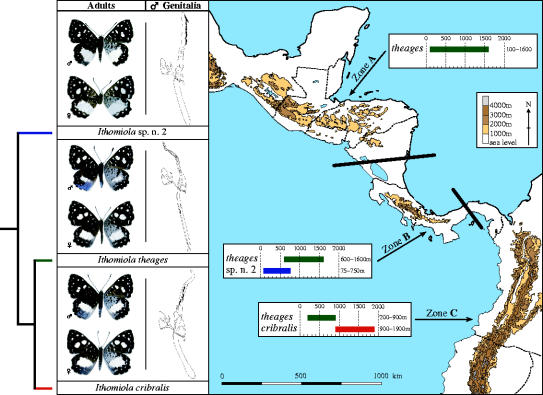Figure 4.
Elevational parapatry and geographic variation in elevational range in the I. theages group. Thumbnails of adults (dorsal surface at left, ventral surface at right) and their male genitalia (vertically positioned in lateral view) allow identification and illustrate most characters in the phylogenetic analysis. The map of Central America and adjoining areas encompasses the known geographic ranges of the three species (see range maps in Hall in press), and the two black bars demarcate three zones, A to C, where different combinations of species are macrosympatric. When I. theages is the only species present (zone A), its elevational range is wide, covering lowland and montane habitats, but where it broadly co-occurs with the lowland specialist I. sp. n. 2 (zone B) it is confined to montane areas, and where it broadly co-occurs with the montane specialist I. cribralis (zone C) it is confined to lowland areas.

